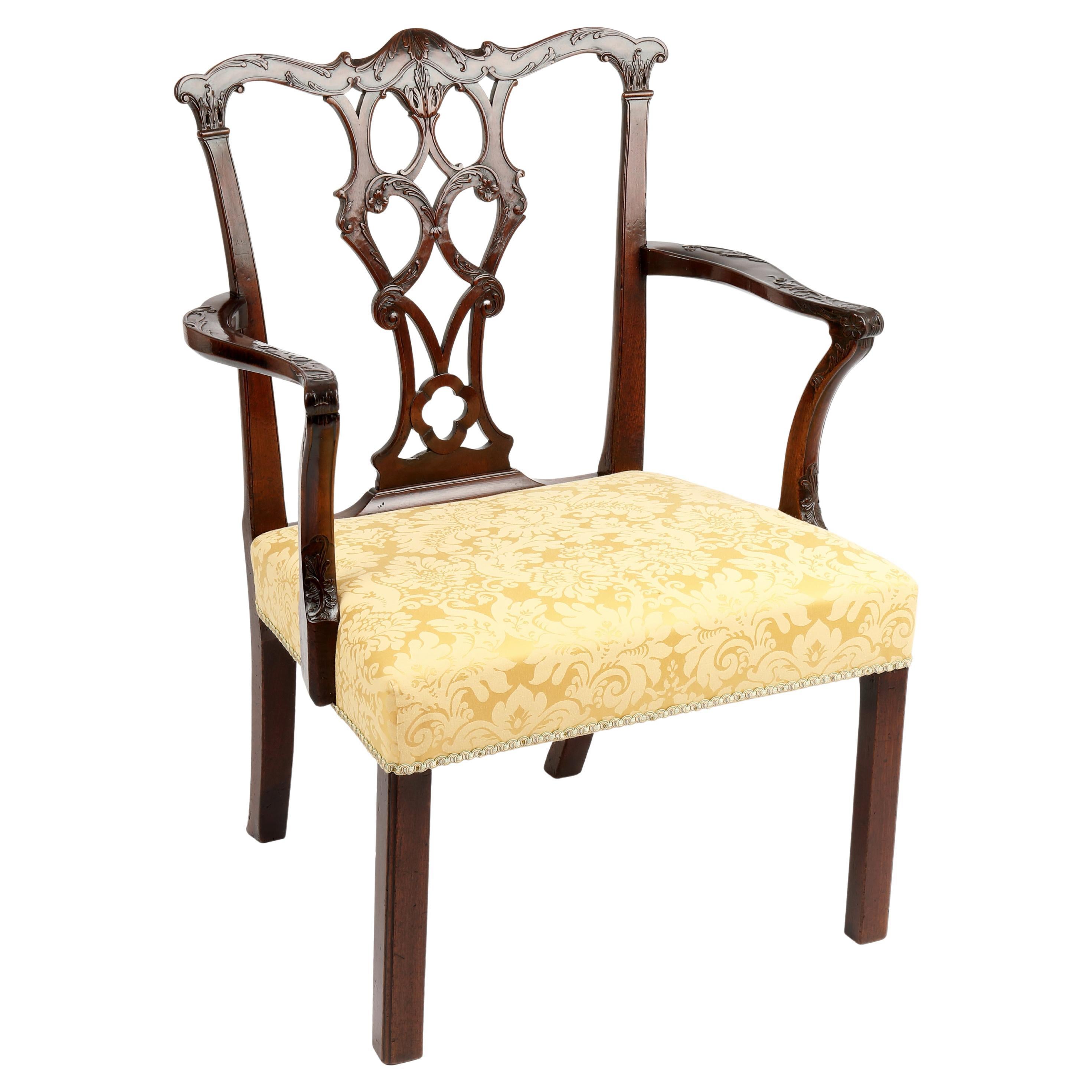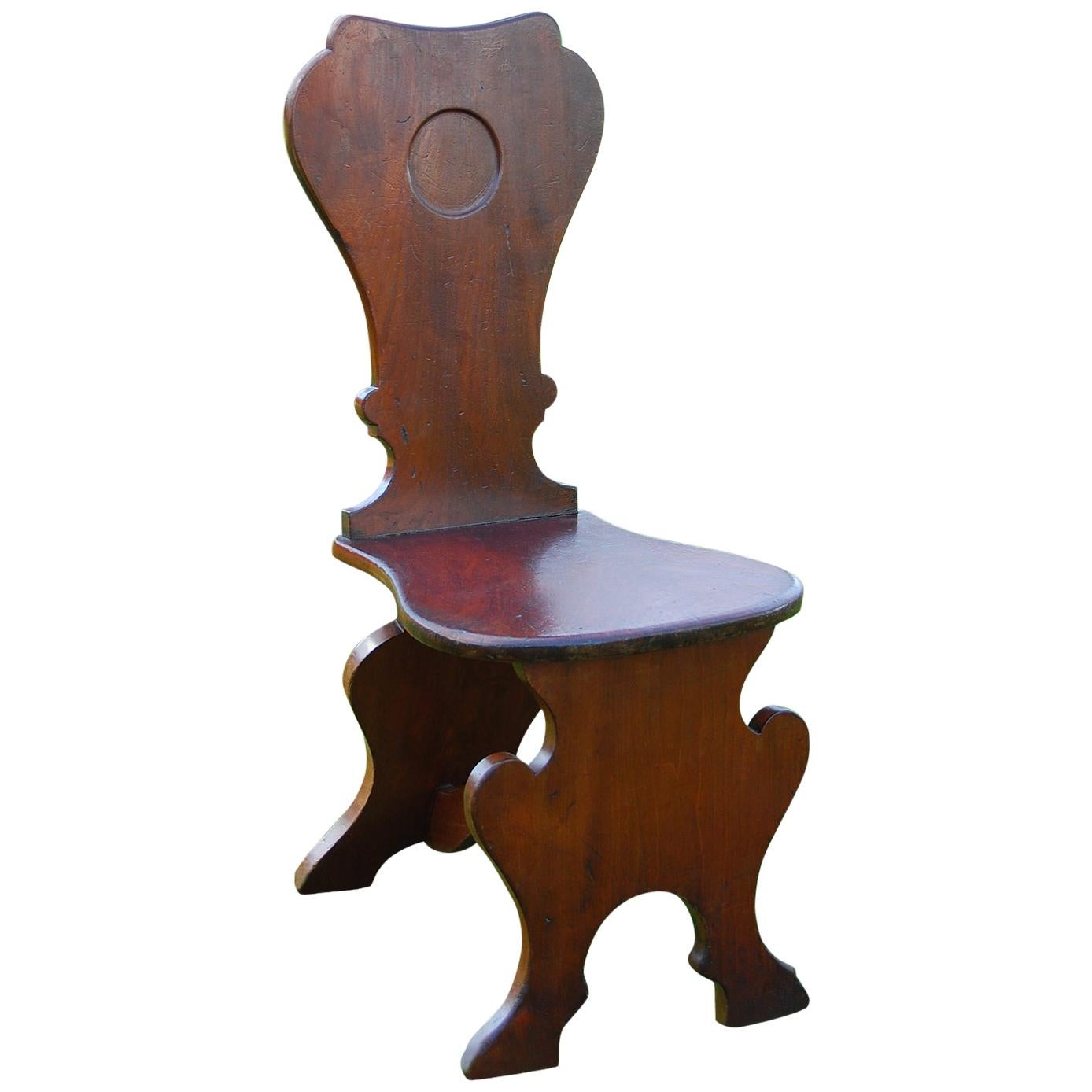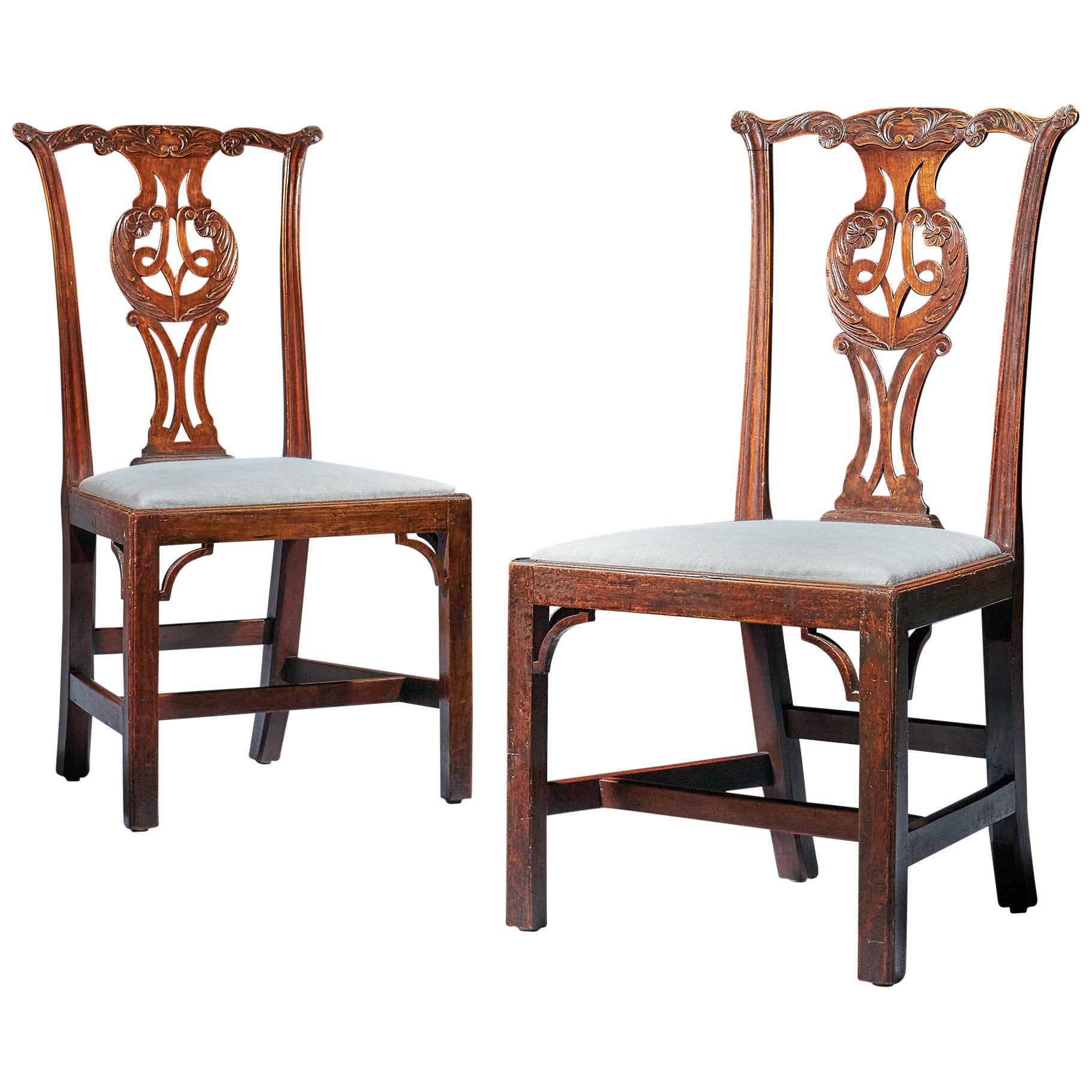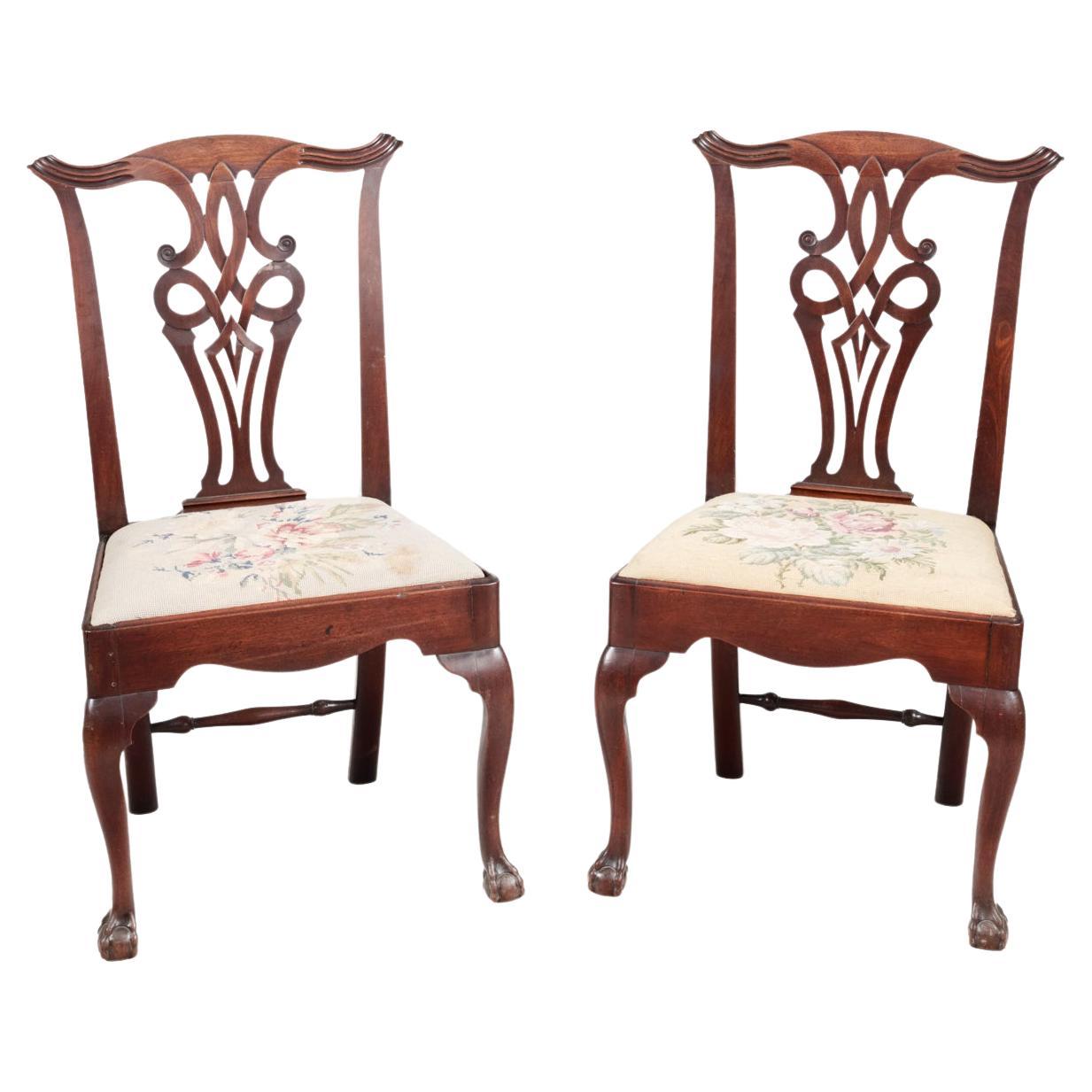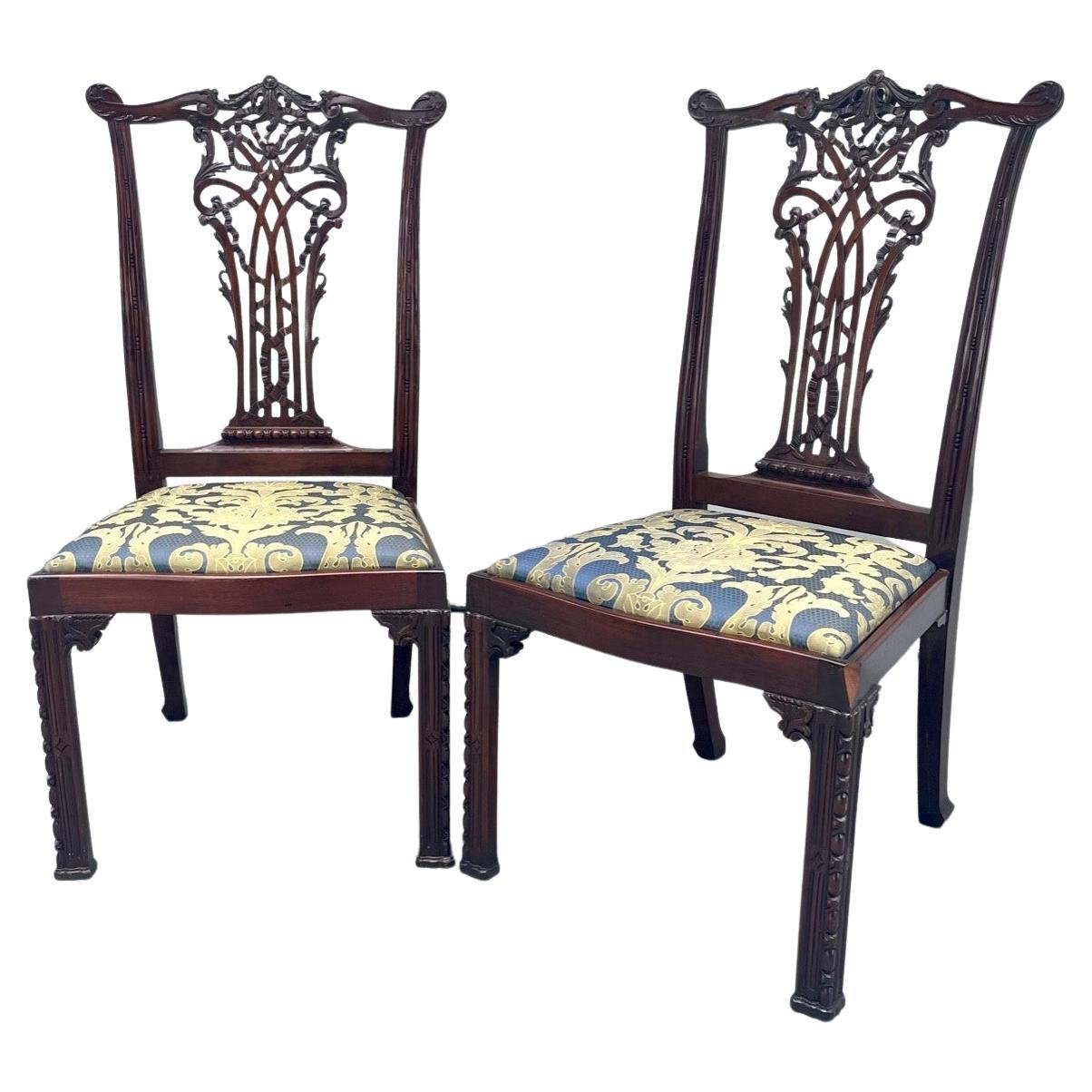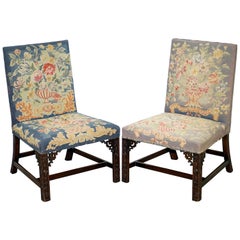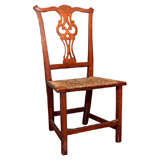
Owl-Eyed American Chippendale Period Chair
View Similar Items
1 of 9
Owl-Eyed American Chippendale Period Chair
About the Item
- Dimensions:Height: 38 in (96.52 cm)Depth: 15 in (38.1 cm)Seat Height: 17.25 in (43.82 cm)
- Materials and Techniques:
- Period:
- Date of Manufacture:circa. 1780-1795
- Condition:Excellent with proper wear.
- Seller Location:Woodbury, CT
- Reference Number:1stDibs: 101025895952
You May Also LikeView All
- Chippendale Period Carved Carver/Arm/Desk ChairBy Thomas ChippendaleLocated in Folkestone, GBA particularly fine quality 18th century mahogany Chippendale period mahogany armchair profusely and finely carved to the back and arms with trailing acanthus, flowerheads and 'C' sc...Category
Antique Mid-18th Century English Chippendale Side Chairs
MaterialsMahogany
- English Georgian 18th Century Chippendale Period Mahogany Hall ChairLocated in Wells, MEEnglish Georgian Chippendale period mahogany hall chair, circa 1770.Category
Antique Mid-18th Century English Chippendale Side Chairs
MaterialsMahogany
- Rare Pair of Thomas Chippendale Period 1760 Embroidered Chairs Ornately CarvedBy Thomas Chippendale Jr., Thomas ChippendaleLocated in GBWe are delighted to this very rare pair of Thomas Chippendale era circa 1760 Library chairs with period embroidered upholstery These are a very rare and highly collectible pair of Library chairs, they were made in the Chippendale era and closely after his designs, the fret work carving, ornate legs, all very finely executed by a master craftsman The upholstery is all original embroidery, the colours are very much of the period and not seen on later reproduction pieces. These are an exceptional example and would be highly prized in any collection The chairs have been lightly restored to include some work to the carvings, the timber has been sympathetically French polished to ensure none of the original charm and patina has been lost A period pair of Chippendales by the great man himself (which these could be) would retail for the high hundreds of thousands, however alas Chippendales are only originals if they come with iron clad provenance, a difficult thing to keep hold of for nearly 250 years. One of the chairs has a plaque to the base for Charles Tozer of 25 Brook street London, Mr Tozer was a very well respected Antiques dealer in the early 20th to mid 20th century that specialised in 18th century furniture Dimensions: Height 97cm Width 64cm Depth 65cm Please note all measurements are taken at the widest point Thomas Chippendale (1718–1779) was born in Otley in the West Riding of Yorkshire, England in June 1718. He became a cabinet-maker in London, designing furniture in the mid-Georgian, English Rococo, and Neoclassical styles. In 1754 he published a book of his designs, titled The Gentleman and Cabinet Maker's Director, upon which success he became renowned. The designs are regarded as representing the current British fashion for furniture of that period and are now reproduced globally. He was buried 16 November 1779, according to the records of St Martin-in-the-Fields, in the cemetery since built upon by the National Gallery. Chippendale furniture is much valued; a padouk cabinet that was offered for auction during 2008 sold for £2,729,250. Life "A Design for a State Bed" from the Director, 1762. Chippendale was born the only child of John Chippendale (1690–1768), joiner, and his first wife Mary (née Drake) (1693–1729). He received an elementary education at Prince Henry's Grammar School. The Chippendale family had long been involved with the wood working trades and so he probably received his basic training from his father, though it is believed that he was also trained by Richard Wood in York, before he relocated to London. Wood later ordered eight copies of the Director. On 19 May 1748 he married Catherine Redshaw at St George's Chapel, Mayfair and they had five sons and four daughters. During 1749 Chippendale rented a modest house in Conduit Court, near Covent Garden. In 1752 he relocated to Somerset Court, off the Strand. In 1754 Chippendale relocated to 60–62 St Martin's Lane in London, where for the next 60 years the family business operated, until 1813 when his son, Thomas Chippendale (Junior), was evicted for bankruptcy. During 1754 he also began a partnership with James Rannie, a wealthy Scottish merchant, who put money into the business at the same time as Chippendale produced the first edition of the Director. Rannie and his bookkeeper, Thomas Haig, probably cared for the finances of the business. His wife, Catherine, died during 1772. After James Rannie died in 1766, Thomas Haig seems to have borrowed £2,000 from Rannie's widow, which he used to become Chippendale's partner. One of Rannie's executors, Henry Ferguson...Category
Antique 1760s English Georgian Side Chairs
MaterialsUpholstery, Hardwood
- Unusual Pair of 18th Century George III Cherry Chairs, Chippendale PeriodLocated in Oxfordshire, United KingdomA fabulous and rare pair of George III cherry wood chairs in original 'Country House' Condition, Circa 1760-1770. The carved cresting rail is decorated with soft sweeping carved ...Category
Antique 18th Century Chairs
MaterialsCherry
- 17th Century American High Back Hall Chair in Period LinenLocated in Chicago, ILGorgeous and unique Hall Chair reimagined in textural period linen. Chair has been respectfully refurbished to honor its 17th Century age. A gorgeous object in any space. Comfortable...Category
Antique 17th Century American Chairs
MaterialsLinen, Fruitwood
- Vintage Chinese Chippendale Style Lacquered ChairLocated in Houston, TXVintage Chinese Chippendale style lacquered chair. Vintage Chinese Chippendale style chair in a gorgeous green lacquered finish. This Chin...Category
Vintage 1960s Hollywood Regency Chairs
MaterialsWood
Recently Viewed
View AllMore Ways To Browse
Owl Chair
Country Chippendale Chair
Contemporary Denim Stool
Continental German Glass Decanter
Cooking Cart
Coors Ceramics
Copeland Compote
Copeland Spode Teapot
Copper Bistro Tables
Copper Drum Coffee Tables
Copper Pub Table
Coquet Limoges
Coquille Fitz
Corot On Sale
Cosa K
Cosco Bar Stool
Courchevel 1850
Couroc Roadrunner Tray
